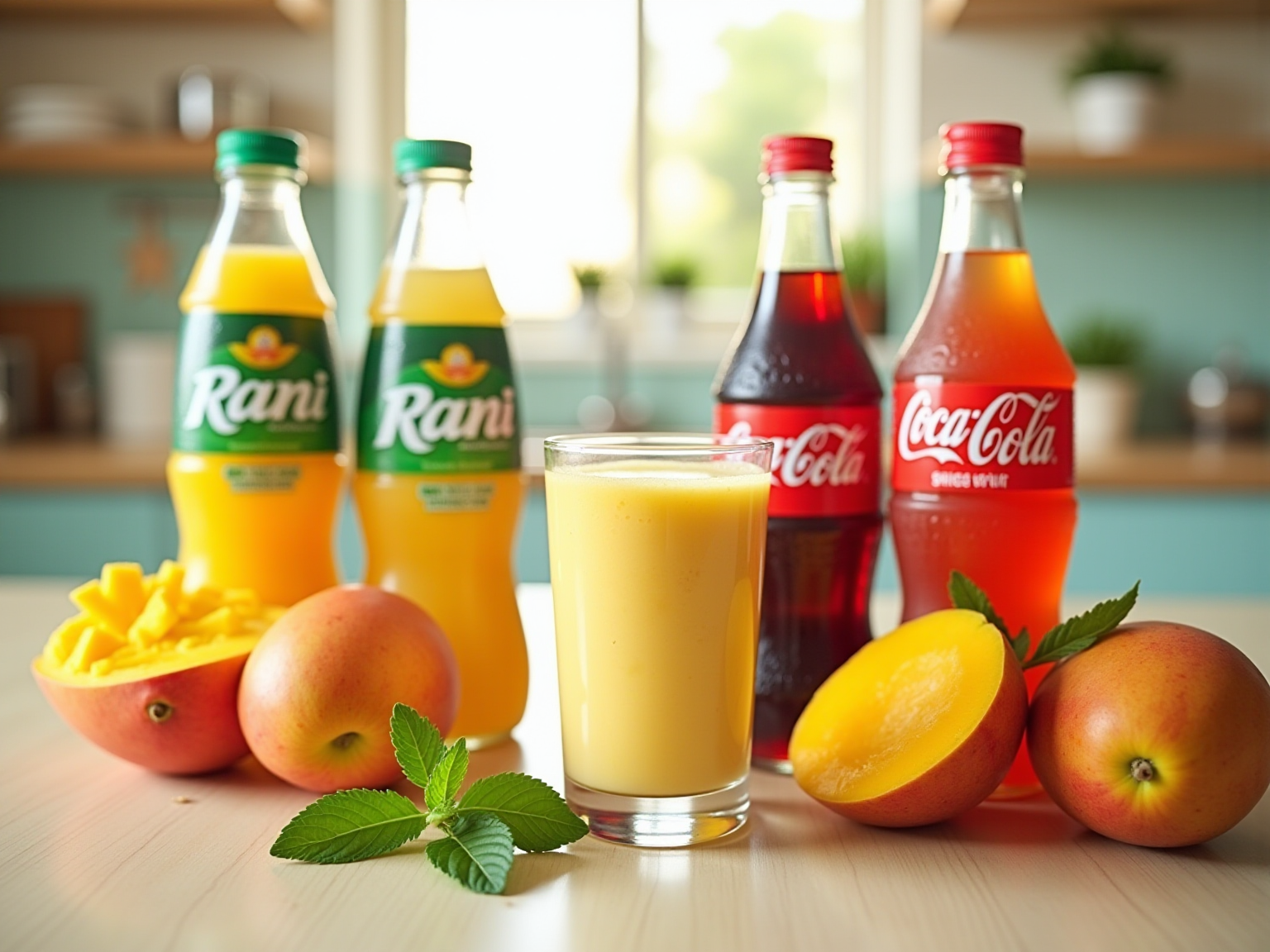General
How to Apply Behavioral Science to Marketing in the Emirates Food and Beverage Market: A Step-by-Step Guide
Overview
This article delves into the effective application of behavioral science principles in marketing strategies tailored for the Emirates food and beverage market. It asserts that a deep understanding of consumer motivations and psychological factors—such as cognitive biases and emotional triggers—is crucial for developing targeted marketing campaigns. These campaigns not only enhance engagement but also drive sales, particularly in a diverse and rapidly evolving market landscape. By leveraging these insights, Brand Managers can navigate the complexities of consumer behavior and craft strategies that resonate deeply with their audience.
Introduction
In the competitive landscape of the Emirates food and beverage market, comprehending the intricate dynamics of consumer behavior is paramount. Behavioral science provides invaluable insights into the psychological and emotional factors that drive purchasing decisions. This understanding enables marketers to develop strategies that resonate profoundly with diverse audiences.
As cultural influences and health consciousness shape consumer preferences, leveraging these insights can significantly enhance engagement and drive increased sales. This article explores the principles of behavioral science, illustrating how they can be effectively integrated into marketing strategies.
Ultimately, this empowers brands to forge meaningful connections with consumers and thrive in a rapidly evolving market.
Understanding Behavioral Science in Marketing
Behavioral science examines the interplay of psychological, cognitive, emotional, cultural, and social factors that shape the decisions of individuals and groups. In the realm of marketing, understanding these dynamics is essential for creating strategies that connect with buyers. Insights obtained from behavioral science empower marketers to predict buyer reactions to various stimuli, such as advertising messages or product placements.
This understanding is especially pertinent in the Emirates food and beverage market, underscoring the necessity of applying behavioral science to marketing in this sector, where a rich tapestry of cultural influences and evolving eating habits significantly impacts purchasing decisions. By leveraging behavioral science, marketers can enhance engagement and drive sales, crafting messages that resonate with buyer motivations.
Key Concepts in Behavioral Science
- Cognitive Biases: Systematic patterns of deviation from rational judgment can profoundly influence consumer choices. For instance, the anchoring effect may lead buyers to rely heavily on the first piece of information they encounter, such as a product’s initial price, thereby affecting their perception of value.
- Emotional Triggers: Emotions play a pivotal role in decision-making processes. Marketers must evoke the right feelings through their campaigns to foster connections with consumers. A campaign that evokes nostalgia, for example, can establish a strong bond with the audience, fostering loyalty to the company. Data from LinkedIn indicates that images and videos lead to higher engagement rates, with video content achieving the most interactions, particularly longer videos on Facebook, which correlate with greater reach and interaction.
- Social Proof: Consumers often seek validation from others when making decisions. Highlighting popular products or showcasing customer testimonials can enhance credibility and motivate purchases. Research suggests that social media greatly impacts product discovery, with users frequently following companies for product information. This emphasizes the importance for brands to adopt thoughtful social media marketing strategies that effectively engage audiences and enhance visibility. A case study titled “Influence of Social Media on Brand Discovery” illustrates this point, emphasizing the significance of ads, recommendations, and updates in shaping purchasing decisions.
Understanding these key concepts enables marketers to craft more effective strategies that not only capture attention but also resonate deeply with their target audience, ultimately leading to increased engagement and sales. As Jaime Pierson noted, “this is a great product, product shipped extremely fast, no problems or defects with product, recommended buy for anyone.” This highlights the impact of product quality on brand loyalty and customer satisfaction.
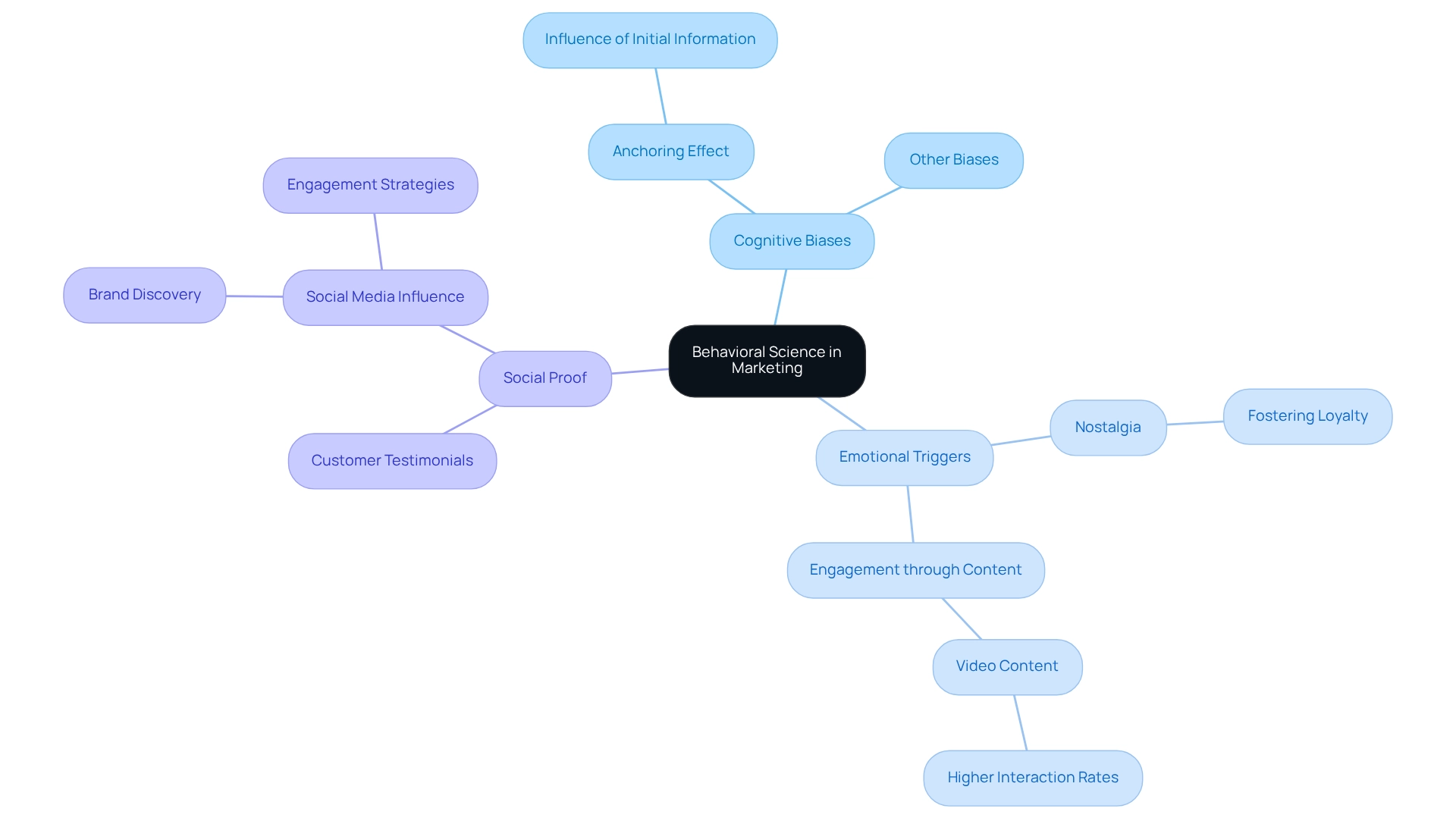
Overview of the Emirates Food and Beverage Market
The Emirates food and beverage market is witnessing exceptional growth and diversity, driven by a multicultural population and substantial disposable incomes. Market forecasts indicate that the UAE’s food and beverage industry is set to expand significantly from 2021 to 2033, reflecting the increasing demand for diverse and high-quality products. This dynamic landscape is influenced by several key trends:
- Health Consciousness: The demand for healthy and organic food options is on the rise, fueled by a growing awareness of health and wellness among consumers. This trend is evident in promotional strategies that highlight nutritional benefits and the use of natural ingredients. For instance, WonderEight’s collaboration with Quaker Oats developed a tailored promotional strategy that showcased the health benefits and versatility of the product, leading to improved public perception and increased sales.
- Cultural Diversity: The UAE’s rich cultural tapestry results in a broad spectrum of culinary preferences, prompting companies to offer diverse product lines that cater to various tastes and dietary needs. This multiculturalism influences not only product development but also promotional messaging, which must resonate with a wide audience. WonderEight has adeptly harnessed this diversity by creating campaigns that celebrate local flavors while appealing to international palates.
- Digital Transformation: The emergence of e-commerce and online food delivery services is reshaping consumer engagement with brands. As more consumers transition to digital platforms for their food purchases, companies must adapt their promotional strategies to connect effectively in this online landscape. WonderEight has embraced innovative digital marketing solutions that enhance online visibility and customer engagement for its clients.
- Sustainability: Growing public interest in sustainable practices is motivating companies to adopt eco-friendly packaging and sourcing methods. This shift not only meets consumer demand but also fosters loyalty among environmentally conscious buyers. WonderEight has been a leader in this movement, assisting brands in effectively communicating their sustainability initiatives.
Moreover, the UAE ranked fourth in the MENA region for food security performance in 2021, underscoring the importance of food security in shaping consumer behavior and market growth. These factors create a vibrant environment where leveraging insights from behavioral science can significantly enhance promotional effectiveness. By understanding the motivations and preferences of consumers, brands can tailor their strategies to resonate more deeply, ultimately driving engagement and sales in this competitive market.
As Jana Schmidt from CEDAR CX Technologies remarked, “I am very impressed with the information in this report. The author clearly did their research when they came up with this product and it has already given me a lot of ideas.” This highlights the critical role of thorough research in formulating effective promotional strategies.
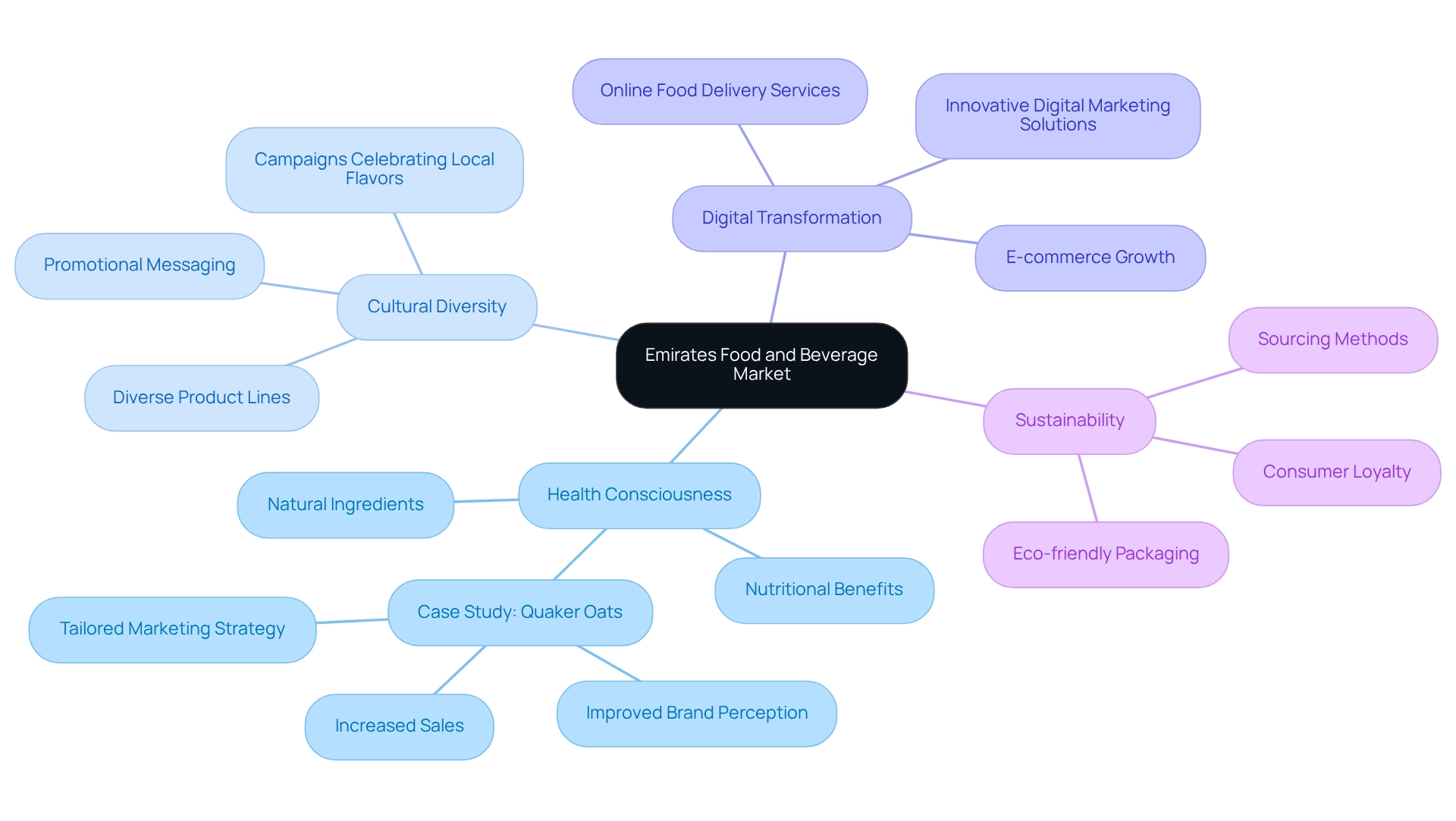
Key Behavioral Science Principles for Effective Marketing
Several key behavioral science principles can be effectively applied in marketing to enhance consumer engagement and drive purchasing decisions:
- Nudge Theory: This principle posits that subtle modifications in how choices are presented can significantly sway consumer behavior. For instance, positioning healthier food options at eye level in stores has been shown to encourage healthier choices among shoppers. In 2025, successful marketing campaigns in the UAE and Saudi Arabia have utilized nudge theory by strategically placing promotional items in high-visibility areas, leading to increased sales. This method illustrates the changing eating patterns and the new guidelines of food marketing, where visibility and accessibility play vital roles in purchasing decisions. Social media platforms can amplify this effect by showcasing these healthier options through engaging photos and videos, further encouraging individuals towards better choices.
- Scarcity Principle: Generating a feeling of urgency or restricted availability can motivate individuals to act quickly, fueled by the fear of losing out on a sought-after product. Research indicates that order sizes can increase sixfold when sales representatives highlight both low supply and the exclusivity of the information. Knishinsky notes, “The double-scarcity pitch (low supply, secret information) was 3 times more compelling than the single-scarcity pitch (low supply)!” This principle has been effectively utilized in food and beverage marketing, where limited-time offers or exclusive flavors generate excitement that prompts swift buyer action. To balance scarcity with customer satisfaction, businesses should be transparent about product availability and ensure that the perceived value aligns with client expectations, especially as buyer preferences evolve. Utilizing social media to promote these limited-time offers through eye-catching visuals can enhance their impact.
- Anchoring Effect: Consumers often depend heavily on the first piece of information they encounter (the anchor) when making decisions. Marketers can leverage this by presenting a higher-priced item first, making subsequent options appear more reasonable. This approach has been effectively applied in pricing methods for premium food items, increasing perceived value and promoting purchases, especially in a market where buyers are becoming more selective about their options. Content creation strategies, such as using compelling imagery and videos to highlight premium products, can reinforce this anchoring effect.
- Reciprocity: When individuals receive something at no cost, they often feel a duty to return the favor. This principle can be harnessed through tactics such as offering free samples or trials, which have proven effective in increasing customer loyalty and driving sales in the food and beverage sector. As eating habits change, offering individuals chances to sample new products can nurture a sense of connection and loyalty. Social media campaigns that highlight these free offerings through engaging content can further enhance audience engagement.
Understanding these principles allows marketers to design campaigns that effectively influence consumer behavior, leading to improved engagement and conversion rates. Significant case studies, like the brand identity enhancement for Castania and the digital campaign for Motorola, demonstrate how these behavioral science applications can produce quantifiable results, emphasizing the significance of ethical persuasion in promotional approaches. As highlighted by experts, the ethical use of these principles fosters trust and long-term success in business relationships, as discussed in Cialdini’s work on the ethical implications of persuasion.

Step-by-Step Application of Behavioral Science in Marketing Strategies
To effectively integrate behavioral science into marketing within the Emirates food and beverage market, it is essential to follow these strategic steps:
- Identify Target Audience: Start by conducting a thorough analysis of the demographics, preferences, and behaviors of your target market. Understanding the unique characteristics of consumers in the UAE and Saudi Arabia is crucial, especially given that the cost of a Big Mac in the UAE is approximately $4.90. This figure reflects local purchasing power and buying habits.
- Conduct Behavioral Research: Utilize diverse research methodologies, including surveys, focus groups, and comprehensive market analyses. These tools are instrumental in uncovering insights into buyer motivations and the decision-making processes that drive purchases in the food and beverage sector.
- Develop Behavioral Insights: After collecting data, conduct an analysis to pinpoint significant behavioral patterns and preferences. This examination can reveal how individuals interact with brands and what influences their decisions, allowing for more targeted promotional strategies. For instance, the successful brand identity enhancement of Castania exemplifies how understanding buyer behavior can lead to impactful promotional tactics.
- Design Marketing Campaigns: Leverage the insights obtained to create campaigns that harness behavioral principles. Techniques such as nudges—subtle prompts that encourage specific actions—or emotional triggers can be particularly effective in shaping consumer decisions. The digital campaign for Motorola serves as a prime example of how innovative promotion can resonate with audiences when behavioral insights are effectively applied.
- Test and Optimize: Implement A/B testing to assess the effectiveness of various promotional strategies. By evaluating different approaches, you can refine your campaigns based on actual buyer responses, ensuring that your marketing efforts yield maximum effectiveness.
- Measure Outcomes: Finally, assess the success of your behavioral science applications by monitoring metrics such as engagement rates, conversion rates, and customer feedback. This information provides valuable insights into how well your strategies resonate with consumers and drive sales.
By adhering to these steps, marketers can create campaigns that not only engage consumers but also deliver measurable business results. For example, Americana Restaurants’ recent relaunch of the Wimpy burger brand in the UAE, which incorporated robotic solutions for enhanced cooking consistency, illustrates how innovative strategies can capture customer attention and establish a robust market presence. Such case studies emphasize the critical role of understanding and applying behavioral science in marketing within the Emirates food and beverage market.
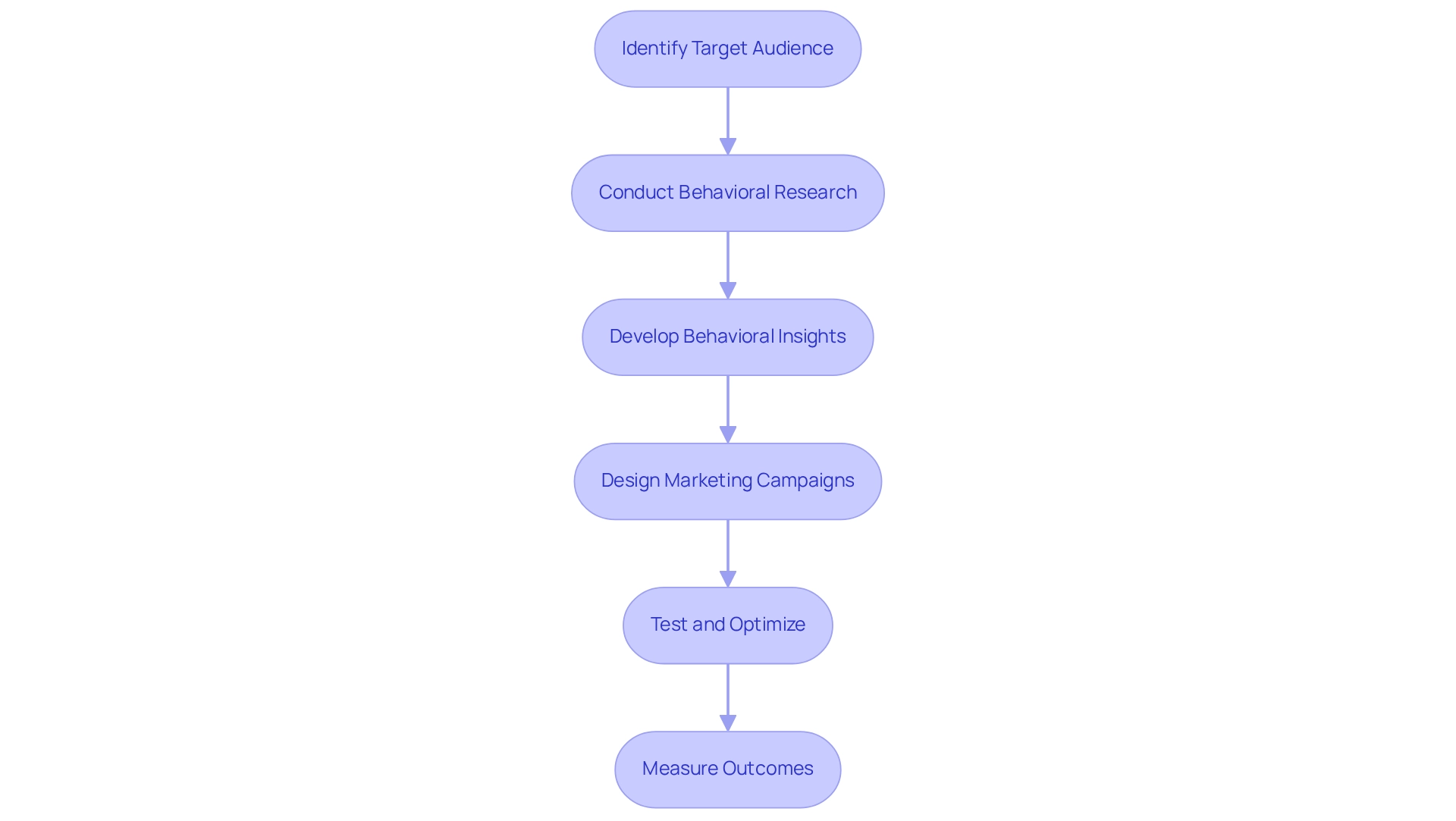
Analyzing Consumer Behavior in the Food and Beverage Sector
Analyzing consumer behavior in the Emirates food and beverage sector necessitates a multifaceted approach that encompasses several critical components:
- Cultural Influences: Understanding how cultural backgrounds shape food preferences and purchasing decisions is essential. Traditional Emirati cuisine significantly influences the popularity of certain products, as individuals often gravitate towards options that resonate with their cultural heritage. This cultural context fosters loyalty to products and influences purchasing patterns. Notably, the case study titled “Indulgence vs. ‘Restraint in Morocco'” illustrates how cultural norms can regulate desires and impulses, leading to distinct purchasing behaviors that marketers must consider.
- Trends and Preferences: Staying abreast of emerging trends, such as the increasing demand for plant-based diets and organic products, is crucial for companies aiming to align their offerings with customer expectations. Recent data reveals that 30% of millennials in the region plan to subscribe to food services within the next six months, underscoring a shift towards convenience and health-conscious choices. This statistic emphasizes the necessity of adapting to evolving buyer preferences in the market.
- Purchase Drivers: Understanding the factors that encourage individuals to select one product over another—whether it be price, quality, or reputation—can significantly inform marketing strategies. Brands that effectively communicate their value propositions in these areas are more likely to capture public interest and drive sales. Furthermore, with social media advertising expenditure in the UAE projected to reach US$447.60 million by 2025, leveraging these platforms can enhance visibility and engagement.
- Feedback Mechanisms: Establishing robust systems for gathering client feedback, such as online reviews and surveys, is vital for gaining continuous insights into client satisfaction and pinpointing areas for improvement. This feedback loop not only enhances product offerings but also cultivates a sense of community and engagement with the brand.
By concentrating on these elements, marketers can develop a nuanced understanding of their audience, thereby enhancing their effectiveness in applying behavioral science to marketing within the Emirates food and beverage market. This results in more targeted approaches that resonate with individuals. Additionally, considering Malta’s high score of 66 in Indulgence, which reflects a culture that values enjoyment of life, can offer valuable insights into how cultural influences shape consumer behavior in the UAE.
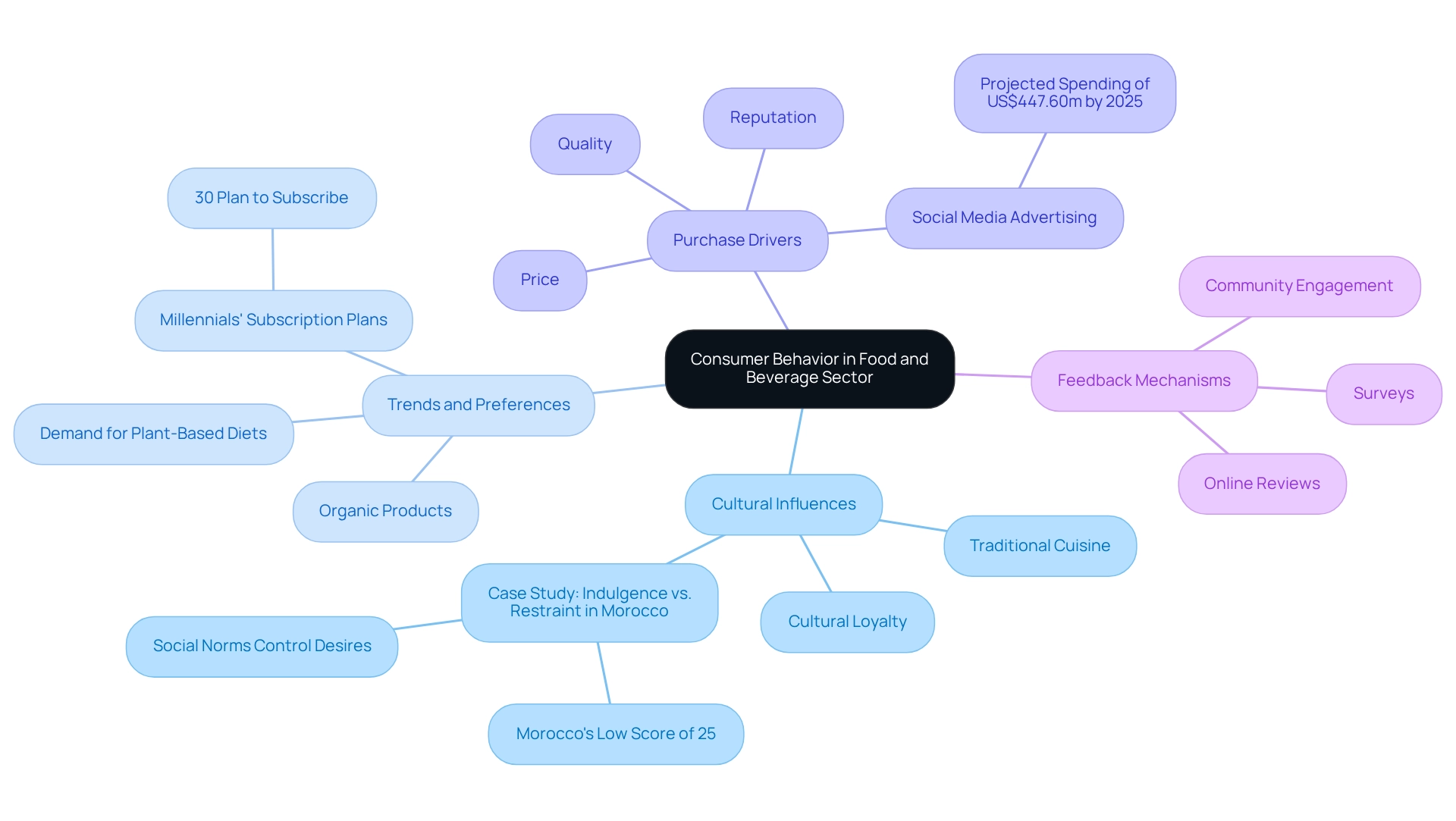
Measuring the Impact of Behavioral Science on Marketing Outcomes
To effectively measure the impact of behavioral science on marketing outcomes, consider implementing the following strategies:
- Define Key Performance Indicators (KPIs): Establish specific metrics that align with your marketing objectives. Key indicators may include conversion rates, customer engagement levels, and return on investment (ROI). For 2025, focus on KPIs that reflect the unique dynamics of the food and beverage sector, such as customer retention rates and brand loyalty metrics. Notably, the vocabulary developed by specialists encompasses nearly 300 emotional motivators, which can be essential in shaping these KPIs to enhance audience engagement.
- Utilize Analytics Tools: Leverage advanced analytics tools, such as Google Analytics and social media insights, to monitor audience interactions and behaviors associated with your campaigns. Recent statistics indicate that tracking emotional motivators can significantly enhance audience engagement, making it crucial to select tools that provide comprehensive data analysis. Furthermore, enhancing online and omnichannel experiences for emotional connection can further elevate engagement metrics.
- Conduct Surveys and Feedback: Gather qualitative data through client surveys to assess perceptions of your promotional initiatives. This feedback can uncover insights into how well your campaigns connect with target groups, enabling modifications based on audience sentiment.
- A/B Testing: Implement A/B testing to experiment with different promotional messages or approaches. This method enables you to identify which strategies yield the highest engagement and conversion rates, optimizing your campaigns for improved performance. Emphasizing emotional involvement in these tests can lead to more successful outcomes.
- Longitudinal Studies: Conduct longitudinal studies to examine buyer behavior over time. This method aids in recognizing trends and changes in preferences, offering valuable insights that can guide future promotional strategies. For instance, the comprehensive campaigns developed for Mirinda and Quaker Oats successfully resonated with audiences, enhancing brand visibility and consumer connection, showcasing the effectiveness of applying behavioral science to marketing in the emirates food and beverage market. By employing these measurement techniques, marketers can gain critical insights into the effectiveness of applying behavioral science to marketing in the emirates food and beverage market. As Tope Longe, Growth Marketing Manager, emphasizes, determining the KPIs and metrics that matter most is essential for success. This continuous evaluation fosters ongoing improvement and adaptation, ensuring that promotional efforts remain relevant and impactful in the competitive food and beverage landscape.
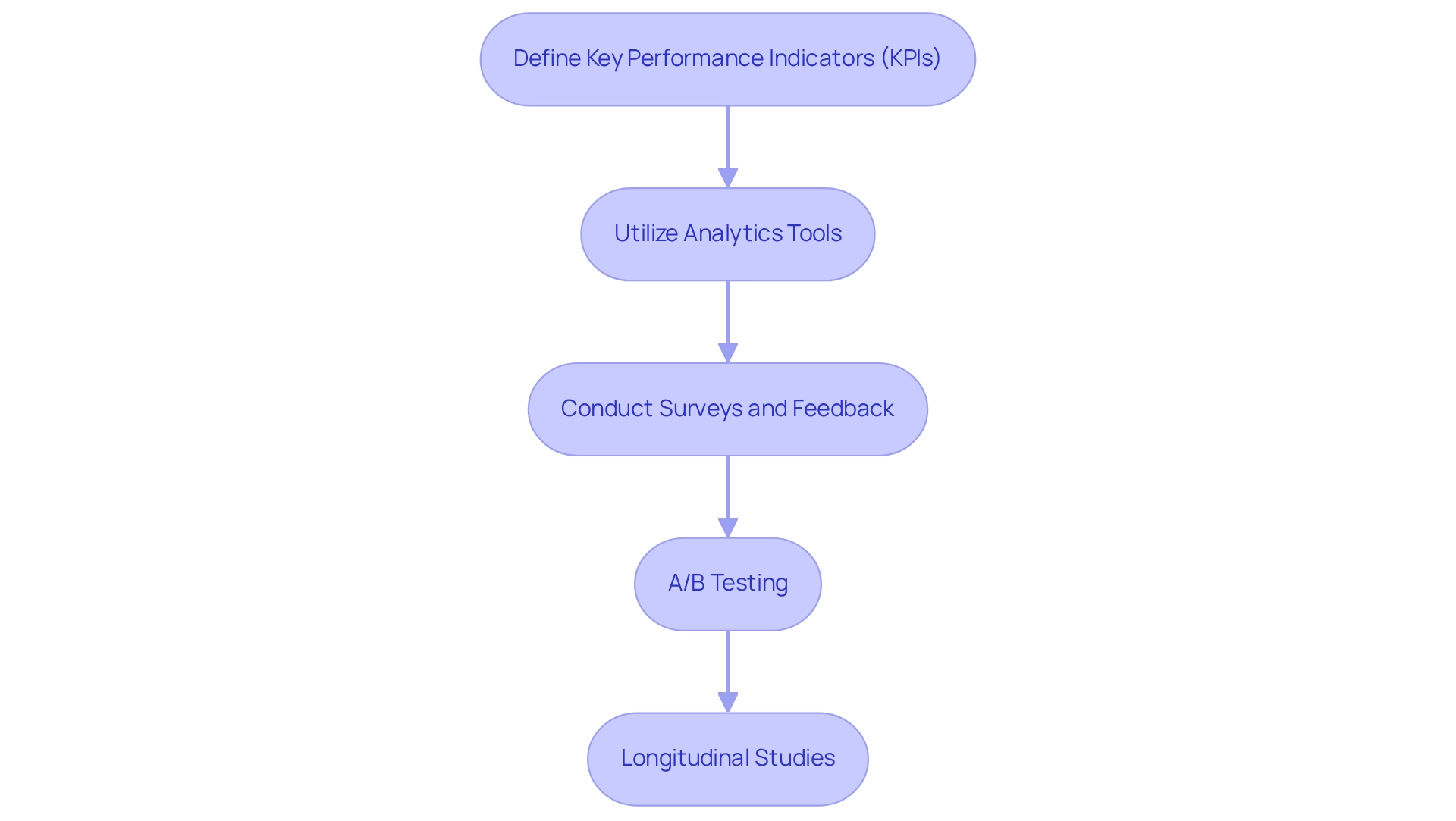
Challenges in Implementing Behavioral Science in Marketing
Implementing behavioral science in marketing presents several notable challenges that organizations must navigate, particularly in the food and beverage sector in the UAE and Saudi Arabia.
- Resistance to Change: Many organizations exhibit hesitance in adopting new strategies, particularly when they have long relied on traditional marketing methods. This resistance can stem from a fear of the unknown or a lack of understanding of the benefits that behavioral science can bring. Change fatigue is prevalent among employees, with many reporting declines in productivity and increased stress. Organizations that prioritize employee experience during change can cultivate a more engaged workforce, which is essential for the success of change initiatives.
- Data Privacy Concerns: The collection and analysis of client data raise significant ethical considerations. Marketers must tackle potential privacy concerns to establish trust with clients, ensuring adherence to regulations while utilizing data effectively.
- Complexity of Consumer Behavior: Human behavior is influenced by a myriad of factors, making it challenging to predict responses accurately. As Jodie Haughton notes, “These statistics confirm that change management is a complex, multi-faceted discipline, but one that is essential in any project.” This complexity necessitates a nuanced approach to understanding consumer motivations and behaviors.
- Integration with Existing Approaches: Aligning behavioral science principles with current promotional methods can be a daunting task. It requires meticulous planning and execution to ensure that new insights complement rather than conflict with established practices. To ensure successful transformations, organizations should define outcomes, build committed teams, support employees, create roadmaps, and manage risks.
- Resource Allocation: Implementing initiatives based on behavioral science often demands additional resources, including time, budget, and specialized expertise. According to Harvard Business Review, long projects reviewed frequently have a higher success rate than small projects that aren’t reviewed frequently. Organizations must be ready to invest in these areas to achieve the full potential of their promotional approaches.
By recognizing these challenges and incorporating strategies to reduce risks, marketers can improve the effectiveness of their efforts, especially when applying behavioral science to marketing in the emirates food and beverage market, ultimately resulting in more significant outcomes in this competitive industry.
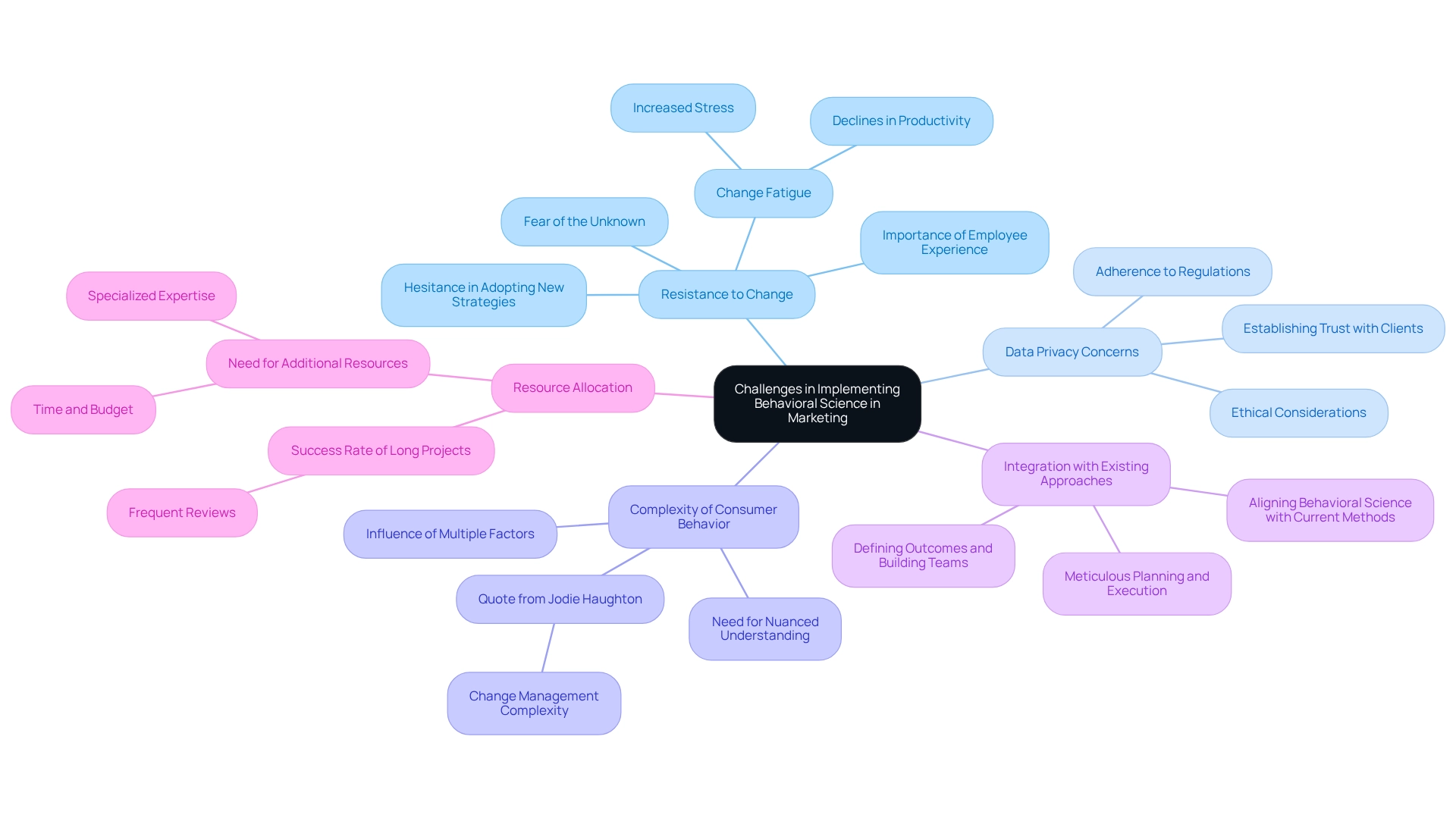
Embracing Behavioral Science for Marketing Success
The integration of behavioral science into marketing within the Emirates food and beverage market is not just beneficial; it is crucial for success in this competitive landscape. This approach offers several key advantages that can significantly boost company performance:
-
Enhanced Consumer Engagement: By exploring consumer motivations and emotional triggers, brands can develop marketing messages that resonate profoundly with their target audience. This understanding cultivates a connection that fosters loyalty and encourages repeat business. For instance, a seller that leveraged big data analytics to uncover emotional insights saw a substantial increase in customer lifetime value, demonstrating the tangible impact of behavioral strategies.
-
Enhanced Conversion Rates: Implementing behavioral principles can transform promotional campaigns into more effective tools for driving sales. The earlier mentioned retailer’s achievements illustrate how understanding emotional drivers can enhance promotional strategies and improve customer engagement.
-
Data-Driven Decision Making: Insights gained from behavioral science enable marketers to make informed decisions based on actual consumer behavior. This methodology not only increases the relevance of promotional efforts but also optimizes resource allocation, ensuring that campaigns are both efficient and effective.
-
Competitive Advantage: In a saturated marketplace, companies that skillfully apply behavioral science can set themselves apart from the competition. Over 60% of consumers expect personalized experiences, and brands that meet this expectation through tailored approaches gain a significant edge. As Costi, a Customer Success expert, notes, “The customer experience and employee engagement are interconnected,” highlighting the importance of understanding consumer behavior in crafting effective promotional strategies.
In summary, applying behavioral science to marketing in the Emirates food and beverage market is essential for thriving in this dynamic environment. By embracing these principles, marketers can unlock the potential for meaningful engagement and measurable outcomes.
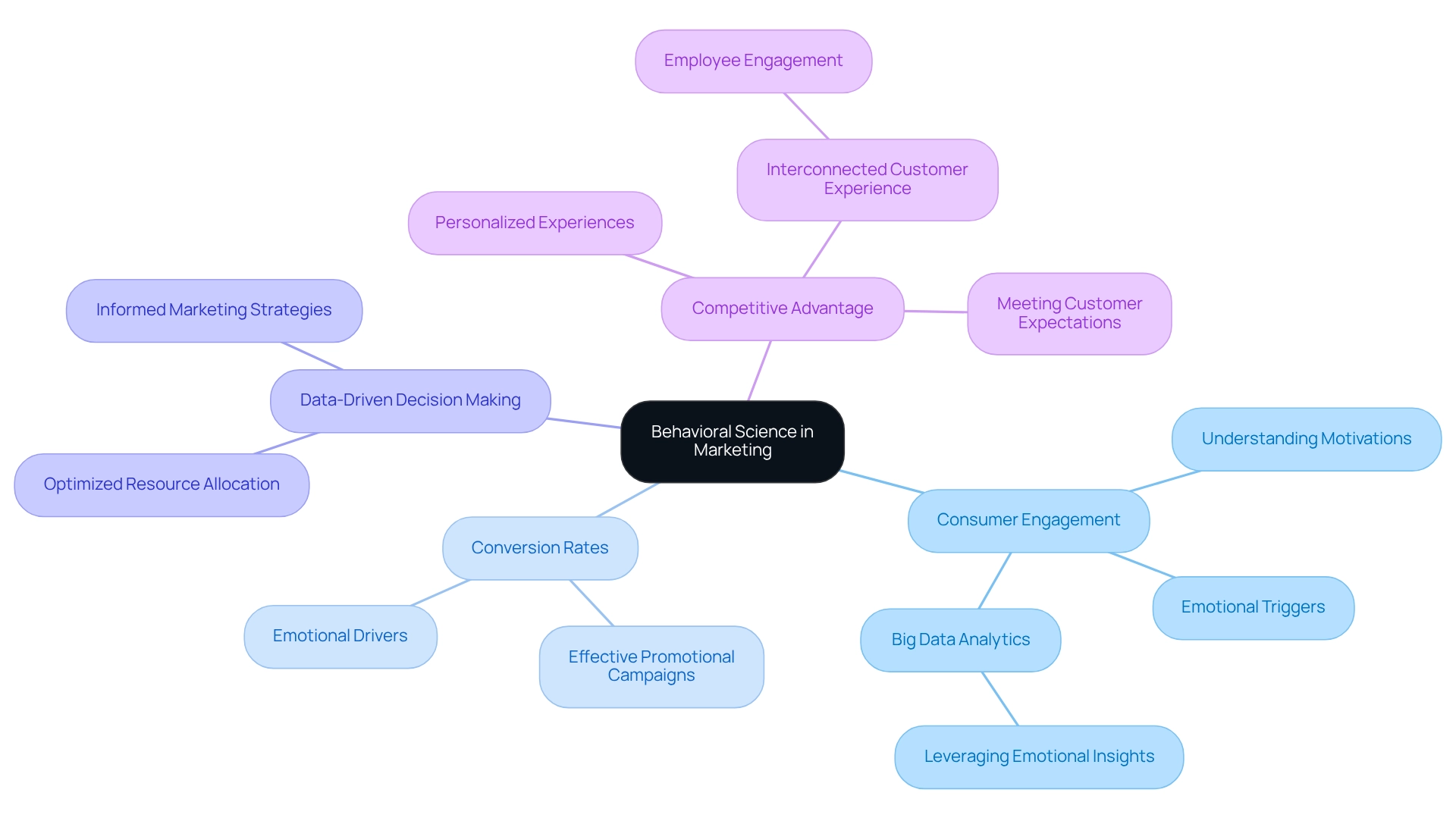
Conclusion
In the dynamic Emirates food and beverage market, leveraging behavioral science is not merely a strategy; it is a necessity for brands aiming to thrive. By understanding the psychological and emotional drivers behind consumer decisions, marketers can craft tailored campaigns that resonate deeply with their target audiences. Key principles such as nudge theory, emotional triggers, and the scarcity principle provide actionable insights that enhance consumer engagement and drive sales.
The vibrant market landscape, characterized by cultural diversity and a growing emphasis on health and sustainability, presents both opportunities and challenges. Marketers must adapt to these trends by developing messages that reflect consumer values and preferences, ensuring that their strategies remain relevant in an ever-evolving environment. The success stories of brands that have effectively harnessed behavioral insights underscore the importance of this approach.
Ultimately, integrating behavioral science into marketing strategies not only improves conversion rates and fosters brand loyalty but also positions companies to gain a competitive edge. As consumer expectations continue to rise, adopting a data-driven, consumer-centric approach will be paramount in navigating the complexities of this market. Embracing these insights can lead to meaningful connections with consumers, driving sustained growth and success in the Emirates food and beverage sector.
Frequently Asked Questions
What is behavioral science and why is it important in marketing?
Behavioral science examines the interplay of psychological, cognitive, emotional, cultural, and social factors that influence the decisions of individuals and groups. In marketing, understanding these dynamics is essential for creating strategies that connect with buyers, allowing marketers to predict buyer reactions to various stimuli.
How does behavioral science apply to the Emirates food and beverage market?
In the Emirates food and beverage market, applying behavioral science is crucial due to the rich cultural influences and evolving eating habits that significantly impact purchasing decisions. Marketers can leverage insights from behavioral science to enhance engagement and drive sales by crafting messages that resonate with buyer motivations.
What are cognitive biases and how do they affect consumer choices?
Cognitive biases are systematic patterns of deviation from rational judgment that can influence consumer choices. For example, the anchoring effect can lead buyers to rely heavily on the first piece of information they encounter, such as a product’s initial price, affecting their perception of value.
What role do emotional triggers play in marketing?
Emotions are pivotal in decision-making processes. Marketers must evoke the right feelings through their campaigns to foster connections with consumers. For instance, a campaign that evokes nostalgia can establish a strong bond with the audience, leading to increased loyalty.
How does social proof influence consumer behavior?
Social proof refers to the tendency of consumers to seek validation from others when making decisions. Highlighting popular products or showcasing customer testimonials can enhance credibility and motivate purchases, making it important for brands to adopt effective social media marketing strategies.
What key trends are influencing the Emirates food and beverage market?
Key trends include: – Health Consciousness: Rising demand for healthy and organic options. – Cultural Diversity: A broad spectrum of culinary preferences due to a multicultural population. – Digital Transformation: Increased reliance on e-commerce and online food delivery services. – Sustainability: Growing interest in eco-friendly practices and packaging.
How can companies adapt their marketing strategies in response to these trends?
Companies can adapt by creating promotional strategies that highlight health benefits, celebrate local flavors while appealing to international tastes, enhance online visibility through digital marketing, and communicate their sustainability initiatives effectively.
What is the significance of food security in the UAE market?
Food security plays a critical role in shaping consumer behavior and market growth in the UAE, which ranked fourth in the MENA region for food security performance in 2021. This underscores the importance of understanding consumer motivations and preferences in this competitive market.


